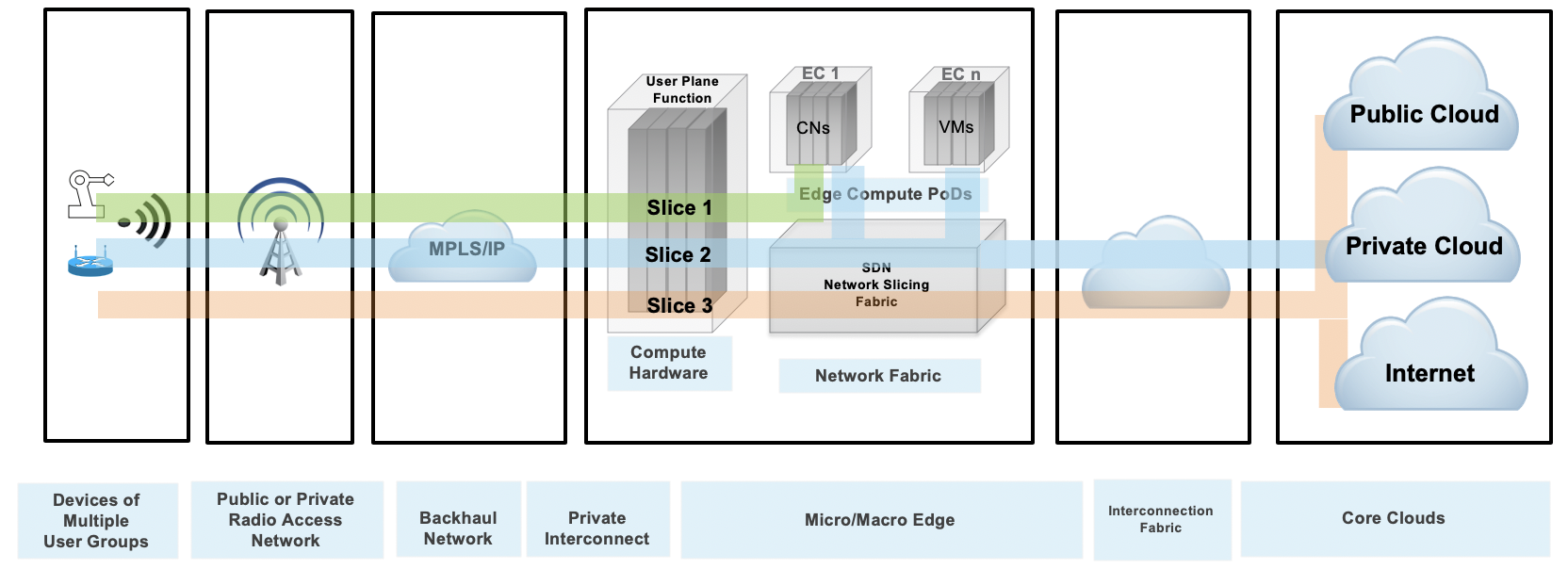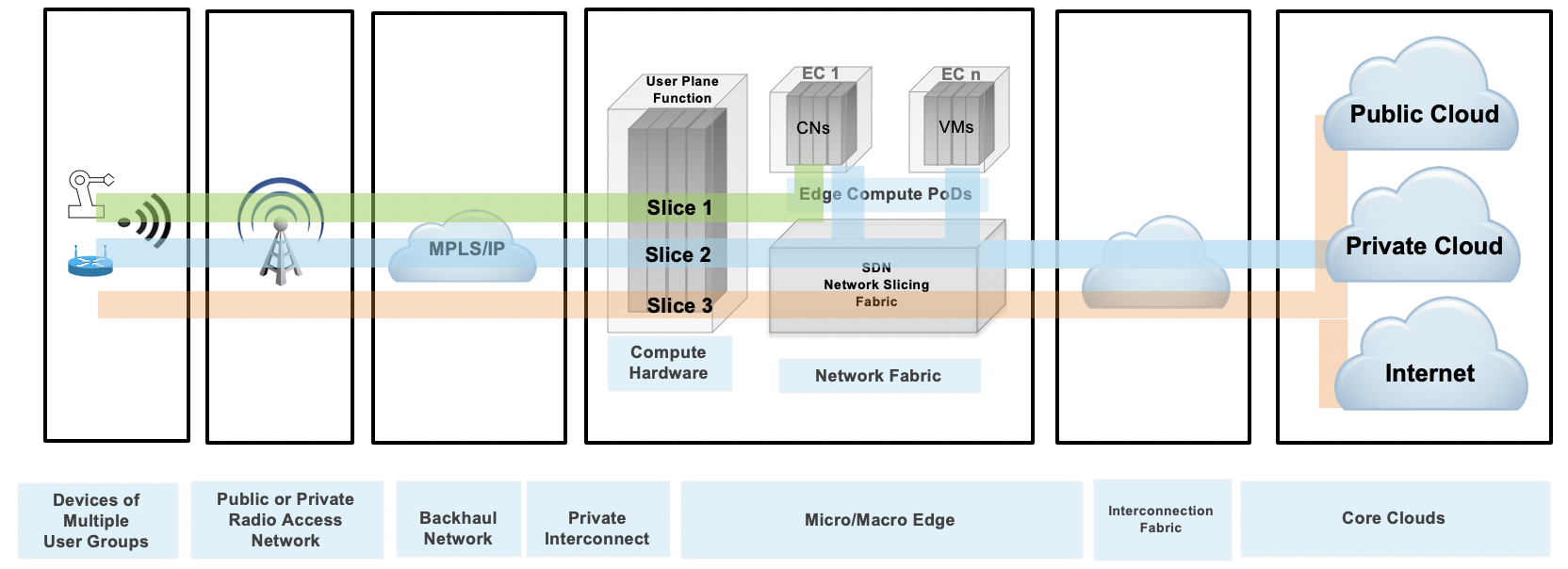...
It is important to point out that the keyword “network” refers to the complete system that provides services and not specifically to the transport and networking functions that are part of this system. In the mobile context, the examples of networks are the Evolved Packet System (EPS) delivering 4G services and the 5G System (5GS) delivering 5G services. Both systems include the RAN (LTE, 5GNR), Packet Core (EPC, 5GC) and transport/networking functions that can be used to construct network slices. A variant of Network Slicing configuration is show in the figure below.
The Slicing Must Go On
Network Slicing is particularly relevant to the subject matter of the Public Cloud Edge Interface (PCEI) Blueprint. As shown in the figure above, there is a reasonable expectation that applications enabled by the 5G performance characteristics will need access to diverse resources. This includes conventional traffic flows, such as access from mobile devices to the core clouds (public and/or private) as well as the general access to the Internet, edge traffic flows, such as low latency/high speed access to edge compute workloads placed in close physical proximity to the User Plane Functions (UPF), as well as the hybrid traffic flows that require a combination of the above for distributed applications (e.g. online gaming, AI at the edge, etc). One point that is very important is that the network slices provisioned in the mobile network must extend beyond the N6/SGi interface of the UPF all the way to the workloads running on the edge compute hardware and on the Public/Private Cloud infrastructure. In other words "The Slicing Must Go On" in order to ensure continuity of intended performance for the applications.
Figure 3. Example of Network Slicing configuration.
...
Figure 2. Example latency budget with 5G and Edge Computing.
The “Edge-in and Cloud-out”
...
Effect
Public Cloud Service Providers and 3rd-Party Edge Compute (EC) Providers are deploying Edge instances to better serve their end users and applications, A multitude of these applications require close inter-working with the Mobile Edge deployments to provide predictable latency, throughput, reliability and other requirements.
...

